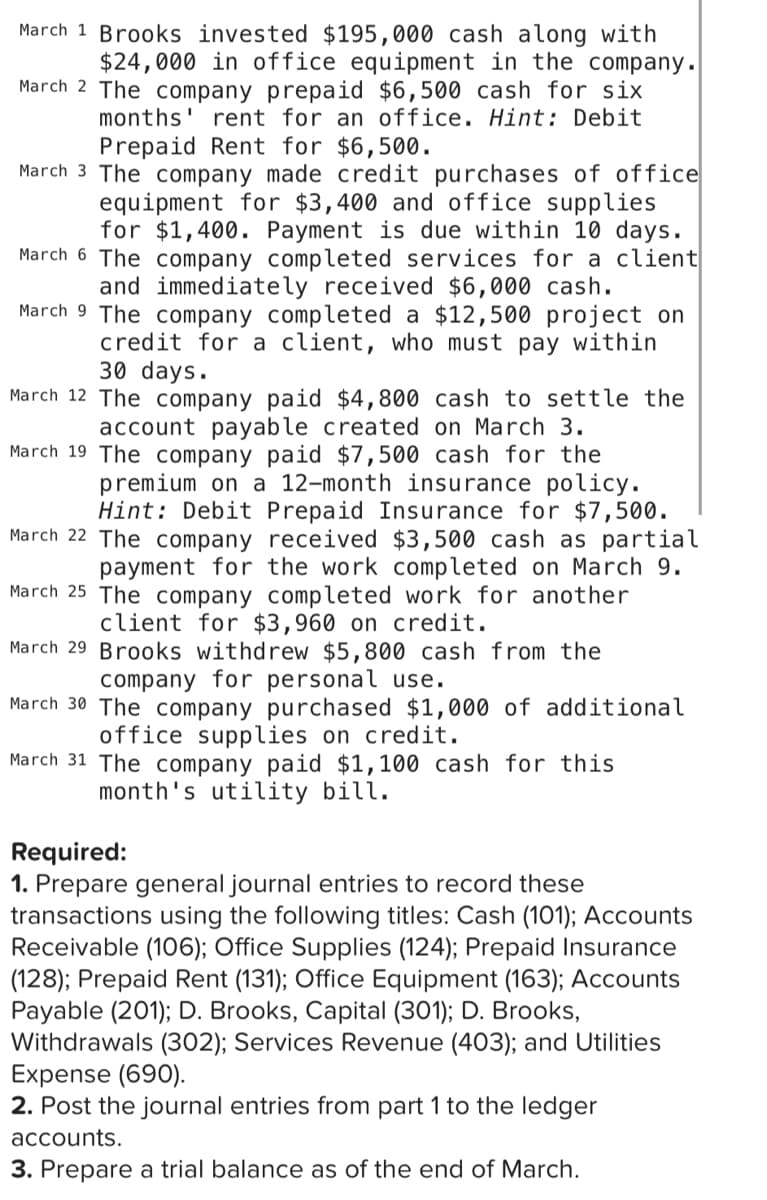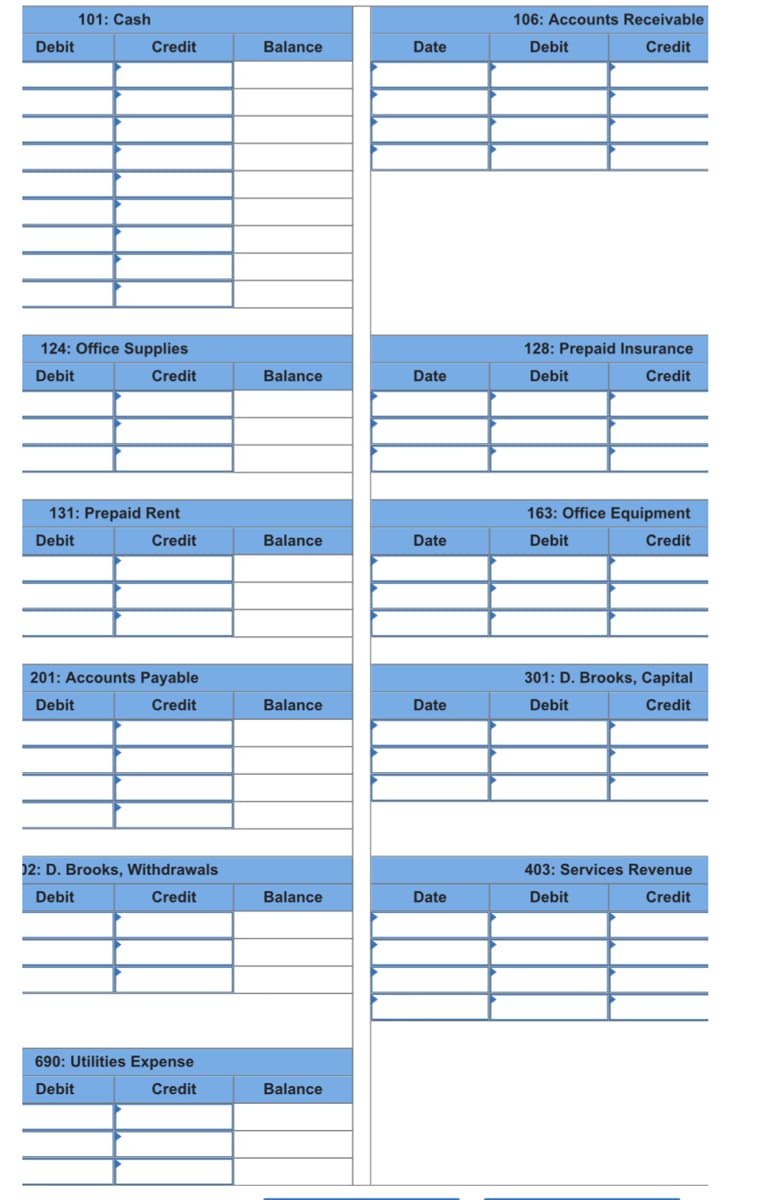March 1 Brooks invested $195,000 cash along with $24,000 in office equipment in the company. March 2 The company prepaid $6,500 cash for six months' rent for an office. Hint: Debit Prepaid Rent for $6,500. March 3 The company made credit purchases of office equipment for $3,400 and office supplies for $1,400. Payment is due within 10 days. March 6 The company completed services for a client and immediately received $6,000 cash. March 9 The company completed a $12,500 project on credit for a client, who must pay within 30 days. March 12 The company paid $4,800 cash to settle the account payable created on March 3. March 19 The company paid $7,500 cash for the premium on a 12-month insurance policy. Hint: Debit Prepaid Insurance for $7,500. March 22 The company received $3,500 cash as partial payment for the work completed on March 9. March 25 The company completed work for another client for $3,960 on credit. March 29 Brooks withdrew $5,800 cash from the company for personal use. March 30 The company purchased $1,000 of additional office supplies on credit. March 31 The company paid $1,100 cash for this month's utility bill. Required: 1. Prepare general journal entries to record these transactions using the following titles: Cash (101); Accounts Receivable (106); Office Supplies (124); Prepaid Insurance (128); Prepaid Rent (131); Office Equipment (163); Accounts Payable (201); D. Brooks, Capital (301); D. Brooks, Withdrawals (302); Services Revenue (403); and Utilities Expense (690). 2. Post the journal entries from part 1 to the ledger accounts. 3. Prepare a trial balance as of the end of March.
The Effect Of Prepaid Taxes On Assets And Liabilities
Many businesses estimate tax liability and make payments throughout the year (often quarterly). When a company overestimates its tax liability, this results in the business paying a prepaid tax. Prepaid taxes will be reversed within one year but can result in prepaid assets and liabilities.
Final Accounts
Financial accounting is one of the branches of accounting in which the transactions arising in the business over a particular period are recorded.
Ledger Posting
A ledger is an account that provides information on all the transactions that have taken place during a particular period. It is also known as General Ledger. For example, your bank account statement is a general ledger that gives information about the amount paid/debited or received/ credited from your bank account over some time.
Trial Balance and Final Accounts
In accounting we start with recording transaction with journal entries then we make separate ledger account for each type of transaction. It is very necessary to check and verify that the transaction transferred to ledgers from the journal are accurately recorded or not. Trial balance helps in this. Trial balance helps to check the accuracy of posting the ledger accounts. It helps the accountant to assist in preparing final accounts. It also helps the accountant to check whether all the debits and credits of items are recorded and posted accurately. Like in a balance sheet debit and credit side should be equal, similarly in trial balance debit balance and credit balance should tally.
Adjustment Entries
At the end of every accounting period Adjustment Entries are made in order to adjust the accounts precisely replicate the expenses and revenue of the current period. It is also known as end of period adjustment. It can also be referred as financial reporting that corrects the errors made previously in the accounting period. The basic characteristics of every adjustment entry is that it affects at least one real account and one nominal account.


In the recording process
Step 1 : Journal entries , These are prepared based on the transactions
Step 2 : Ledger accounts , These are the entry posted from Journal accounts .
Step 3 : Trial Balance , These records all the account balance of ledger accounts.
Trending now
This is a popular solution!
Step by step
Solved in 4 steps









